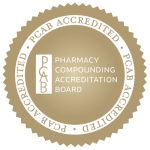In your dermatology practice, you see many patients with acne. Your patients are of different ages, different ethnic backgrounds, male and female and have different skin types and textures. They all have acne, but they are all different. Acne, as a condition, presents itself in various degrees of severity and stages. So, not only do you have to assess the type of acne, but the patient’s complete medical background as well, to determine your patient’s unique treatment needs, based on your findings.
Yes, there are a plethora of commercially available prescription medications and cosmetic products aimed to treat this condition. How many of them provide the promised results?
Or rather, ask yourself– how many of your patients follow your recommendations thoroughly on the treatment prescribed?
Not too many, for sure. Acne – particularly in moderate and severe cases – is not just a skin disorder. Acne affects confidence, self-esteem, social life, intimate relationships, professional life, and in some cases, it even leads to dramatic pathological behavior, such as depression and/or suicidal thoughts. When a patient with acne sees a dermatologist, the hope for rapid resolution is very high. In reality, no acne treatment works overnight. It requires patience, understanding, discipline and rigorous follow through with the recommended steps in the treatment plan.
Unfortunately, many of the patients that must follow a specific treatment regimen belong to a group with the least patience to do so – the very young ones.
How do you solve this problem?
Compounding can be the solution to your problem. It can dramatically increase your acne patients’ compliance!
Compounding allows you to thoroughly personalize the care for your patients with acne.
- You can select the most appropriate base, or create a combination base for your patient’s skin type. Most of the bases used in dermatology compounding are noncomedogenic and allergen and fragrance-free. In addition, the bases used for acne are specially designed to enhance the active pharmaceutical ingredients’ effectiveness. They are cosmetically elegant, leave a pleasant sensation after application, support healthy skin, and reduce oil formation while maintaining moisture allowing the incorporation of various API’s.
- You can select the most appropriate API(s) needed for your acne patient
- You can add proven effective novel ingredients to the formulation, to support the healing process, e.g. – niacinamide.
- Combining more API’s in one preparation reduces or even eliminates the complexity and confusion that a multi-drug regimen creates.
- Convenience for your patient when using a compounded medication is a valued benefit that can improve the clinical outcome.
- Another added benefit is the affordability of the compounded medication, as the patient pays for one custom prepared medication rather than two or more commercially available medications.
Based on the information provided, it is easy to understand the ways that pharmaceutical compounding allows you to offer truly individualized solutions for your patients with acne.
The most important thing for you to do is to find a reliable compounding pharmacy to help you help your patients.
HALDEY Pharmaceutical Compounding can be your valuable resource for professional information and advice in treating your patients with customized medications. Call us today and speak with one of our experienced pharmacists to learn more about compounding for dermatology.
References:
Atkinson, M.J., Sinha, A, Hass, S.L., et al. (2004) ‘Validation of a general measure of treatment satisfaction, the Treatment Satisfaction Questionnaire for Medication (TSQM), using a national panel study of chronic disease’, Health and Quality Life Outcomes, 2:12.
Hilton, L. (2015, May 1). Take your medicine: strategies for patient compliance. Dermatology Times. Retrieved from http://dermatologytimes. modernmedicine.com/dermatology-times/news/many-acne-patients-do-not-get-all-their-meds
Holme, S.A., Man, I., Sharpe, J.L. et al. (2003) ‘The Children’s Dermatology Life Quality Index: validation of the cartoon version’, British Journal of Dermatology, 148 (2), p. 285-290.
American Academy of Dermatology (2015) Molluscum Contagiosum. Available at: https://www.aad.org/dermatology-a-to-z/diseases-and-treatments/m—p/molluscum-contagiosum (Accessed: 12 May 2017)
https://members.pccarx.com/Documents/M-Files/99470_CS_VCL_ThermalBurn.pdf



